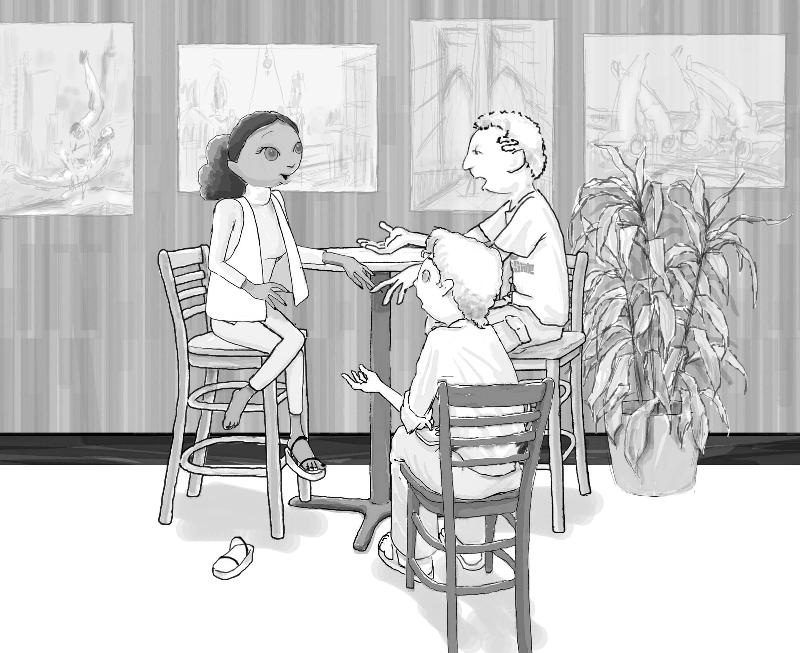Brainstorming Factors
Student Dialog - Brainstorming Factors
 Brian: Now let's talk about how a brainstorming group can work well.
Brian: Now let's talk about how a brainstorming group can work well.
Heather: I think that there is a need to write down all ideas as they evolve.
Deena: How should it be done? Flip chart?
Brian: That would work. There are a lot of ways, like note cards.
Deena: Isn't the real point that ideas are recorded, not how?
Brian: Yeah. And that they are made available to all group members after they meet. I think the computer is the best recorder.
Heather: I agree, especially if there is a large number of people in the group. The drawback is that you have to have a computer.
Brian: Good point, not every group has a computer. I think Heather may have just brought up another issue, the size of the group. What do you mean by a large number of people, Heather? Got a number in mind?
Heather: Not really. I don't think there is any exact number that is defined as best for a brainstorming group. Certainly you would need at least two, or else it wouldn't be a group. I think somewhere between four and six would be just about right.
Brian: The key is that the group should have the right number of people to function effectively. Not too large or too small. Groups are different and what they want to accomplish is different also, so the proper size could vary.
Deena: But, you may not always have a choice in the size of your group. Correct?
Brian: Knowing that group size can influence a group's performance may help you and your group to identify problems and head them off.
Heather: I don't understand what you are getting at. Would you mind explaining what you are trying to say?
Brian: Have you ever been in a group where ideas someone presents are not clear because they are expressed in terms that are not understood?
Heather, Deena: Yeah!
Brian: Groups that have diverse backgrounds sometimes have a difficult time understanding an idea. In a group that doesn't know each other well, misrepresenting an idea could be an issue.
Factors that should exist before a brainstorming session begins
Brainstorming sessions are most successful when you make sure that certain factors exist before the beginning of a brainstorming session. These factors include:
- A well-defined and clearly stated problem that needs to be addressed during the session.
- A group member assigned to act as recorder and write down all the ideas as they are shared.
- The right number of people.
Clues for determining the "right" group size:
- You don't have trouble scheduling the brainstorming session.
- You don't have individuals or factions of the group at war with each other.
- Work is divided equitably among group members.
- You are able to reach consensus.
- You are able to generate new and creative ideas to think about.
- Keep your ideas clear.
Questions to keep in mind in order to make sure ideas are clear
- How similar or diverse are the backgrounds of people in the group?
- How wide is the range of technical skills and subject knowledge in the group?
- Is there background information that needs to be presented to make the idea clear?
- A group member assigned to enforce the guidelines/rules you have set.


